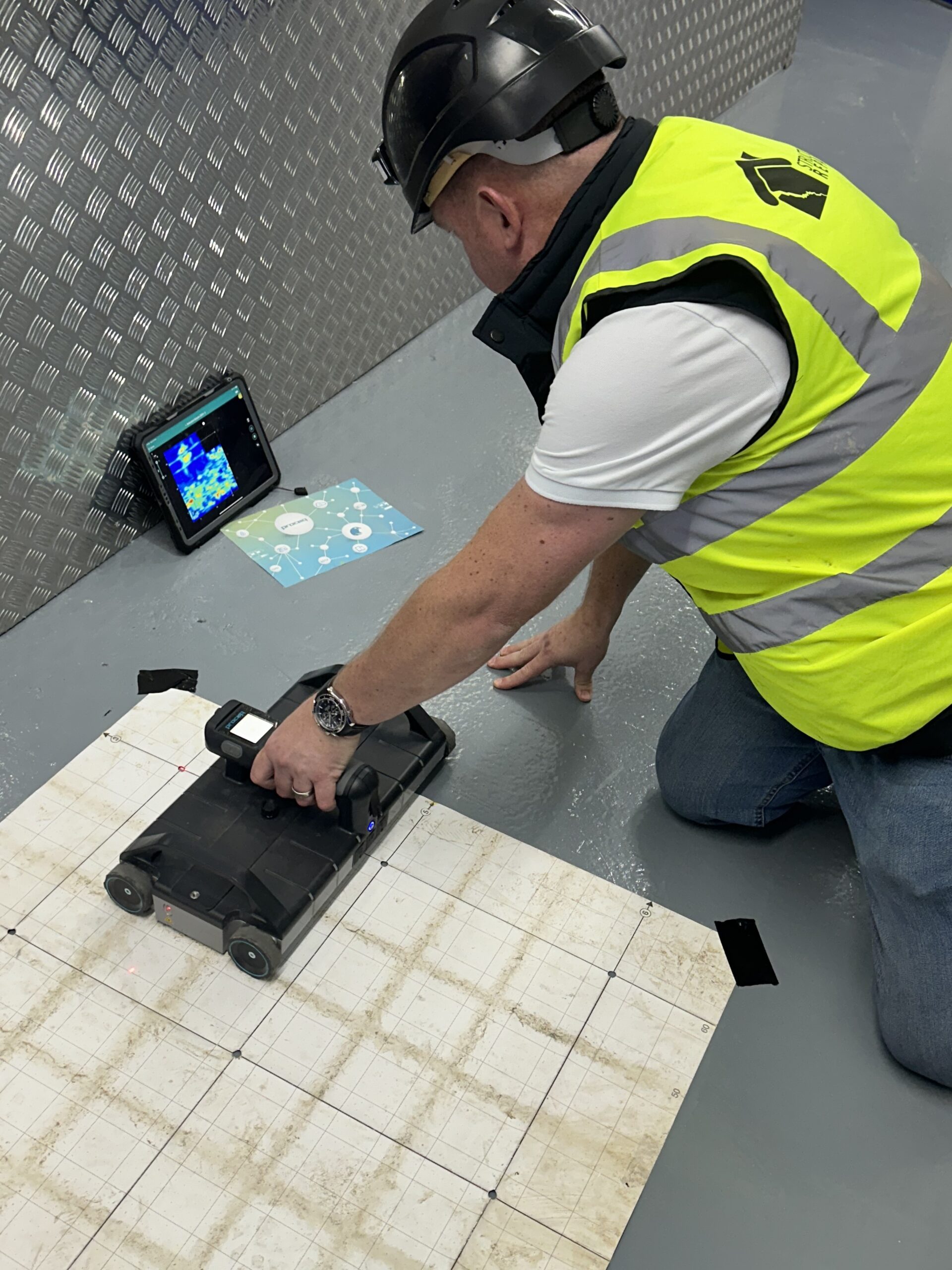Precision and Accuracy in Concrete Scanning Solutions
Beyond the Surface Area: Leveraging Advanced Concrete Scanning Techniques for Unmatched Precision and Understanding
Advanced concrete scanning strategies have arised as essential devices in this quest, supplying a glimpse beneath the surface area to introduce a world of critical understandings. By using advanced modern technologies, experts can uncover abnormalities, examine the problem of concrete structures, and make educated decisions that form the course of jobs.
Significance of Advanced Concrete Scanning
The value of utilizing innovative concrete scanning methods hinges on the exceptional accuracy they offer for spotting sub-surface abnormalities and making certain architectural honesty. By using cutting-edge innovations such as ground-penetrating radar (GPR), electromagnetic induction, and progressed finder imaging, building and construction specialists can delve underneath the surface area of concrete structures with a degree of accuracy that far goes beyond conventional inspection methods. Concrete Scanning. These strategies allow the recognition of concealed threats like rebar corrosion, gaps, conduits, or post-tension cables that could compromise the security and safety and security of a framework gradually
Moreover, progressed concrete scanning provides indispensable insights right into the total condition of a concrete aspect without the requirement for invasive actions, decreasing the danger of triggering damage throughout the evaluation process. The capacity to identify the exact area and depth of potential issues permits for targeted fixings and upkeep, eventually extending the life expectancy of the structure and enhancing its performance. Essentially, the relevance of innovative concrete scanning can not be overemphasized in the world of construction and infrastructure upkeep, where precision and dependability are vital.
Sorts Of Cutting-Edge Technologies

Anomalies and Flaw Discovery

Along with GPR, concrete scanning methods like thermography and impact-echo testing are likewise efficient in identifying flaws and abnormalities. Thermography uses infrared technology to determine variations in surface temperature level, indicating potential locations of concern such as delamination or wetness access. On the various other hand, impact-echo testing involves examining acoustic feedbacks to identify gaps, fractures, and other problems within the concrete. By leveraging these sophisticated techniques, professionals can proactively address architectural concerns, guaranteeing the durability and safety of concrete structures.
Assessing Concrete Condition
How can engineers accurately examine the click to read more problem of concrete frameworks to guarantee their long life and safety and security? Analyzing the concrete problem is an essential facet of preserving framework honesty. Numerous innovative concrete scanning methods are utilized for this function. Ground-penetrating radar (GPR) is commonly used to analyze the inner framework of concrete, finding spaces, cracks, and other anomalies that may endanger its toughness. Furthermore, impact-echo testing can give understandings into the density and honesty of concrete components. Ultrasonic pulse velocity testing is an additional valuable method for reviewing concrete high quality by measuring the rate of audio waves via the product.
Integrating non-destructive testing techniques with visual assessments enables for a thorough evaluation of concrete condition, making it possible for designers to identify prospective concerns early on and implement prompt maintenance or repair services. By leveraging these innovative strategies, designers can make certain the long-term toughness and safety see page of concrete structures.
Enhancing Decision-Making Processes
In the realm of facilities administration, maximizing decision-making procedures is imperative for making sure the efficient maintenance and longevity of concrete structures. Improved decision-making procedures in concrete administration include making use of advanced scanning methods to gather thorough information on the condition of frameworks. By leveraging modern technologies such as ground-penetrating radar and 3D imaging, stakeholders can make informed decisions relating to repair work, reinforcement, or substitute approaches.
These progressed scanning methods offer vital understandings right into the internal make-up of concrete, identifying prospective issues such as gaps, fractures, or rust that might not show up on the surface area. This level of detailed details enables positive upkeep preparation, lessening the danger of architectural failures and raising the general lifespan of concrete structures.
Furthermore, by integrating electronic paperwork and evaluation devices right into the decision-making procedure, stakeholders can track the development of concrete problems gradually, making it possible for anticipating upkeep approaches and maximizing source appropriation. Ultimately, the combination of sophisticated concrete scanning methods boosts decision-making processes by offering unparalleled accuracy, insight, and effectiveness in framework management.
Verdict
In conclusion, progressed concrete scanning techniques supply unrivaled accuracy and understanding in identifying abnormalities, flaws, and examining the condition of concrete structures. By leveraging advanced technologies, decision-making processes can be enhanced, bring about even more enlightened and effective services for maintaining and fixing concrete her latest blog framework. These strategies play a vital duty in making certain the security and durability of concrete structures, making them an indispensable device in the area of building and design.
Moreover, progressed concrete scanning gives very useful insights right into the total problem of a concrete element without the need for intrusive procedures, reducing the risk of triggering damage during the evaluation process - Concrete Scanning. Another cutting-edge modern technology is 3D X-ray scanning, which supplies in-depth pictures of the interior framework of concrete, offering valuable information without the requirement for destructive screening. In Addition, Concrete Cover Meters are utilized to determine the thickness of concrete cover over support bars properly. Boosted decision-making procedures in concrete administration entail using advanced scanning techniques to gather in-depth information on the condition of frameworks.In verdict, progressed concrete scanning methods use unequaled accuracy and insight in identifying abnormalities, problems, and assessing the problem of concrete frameworks